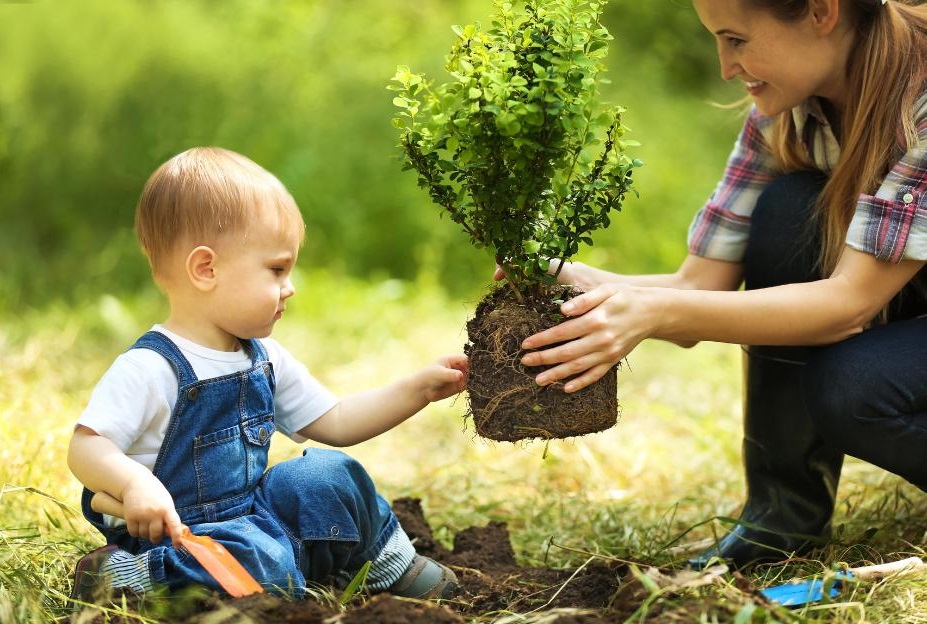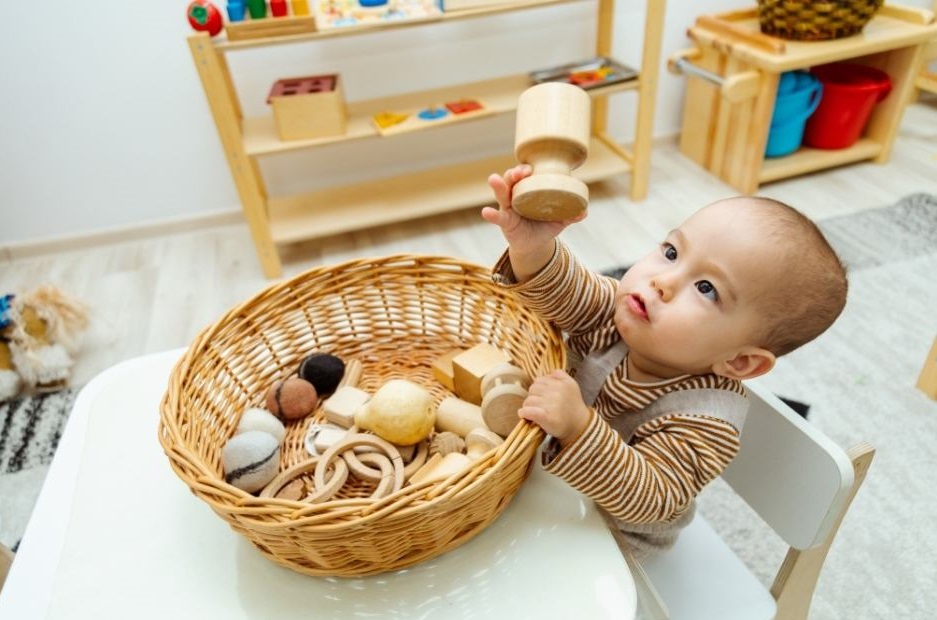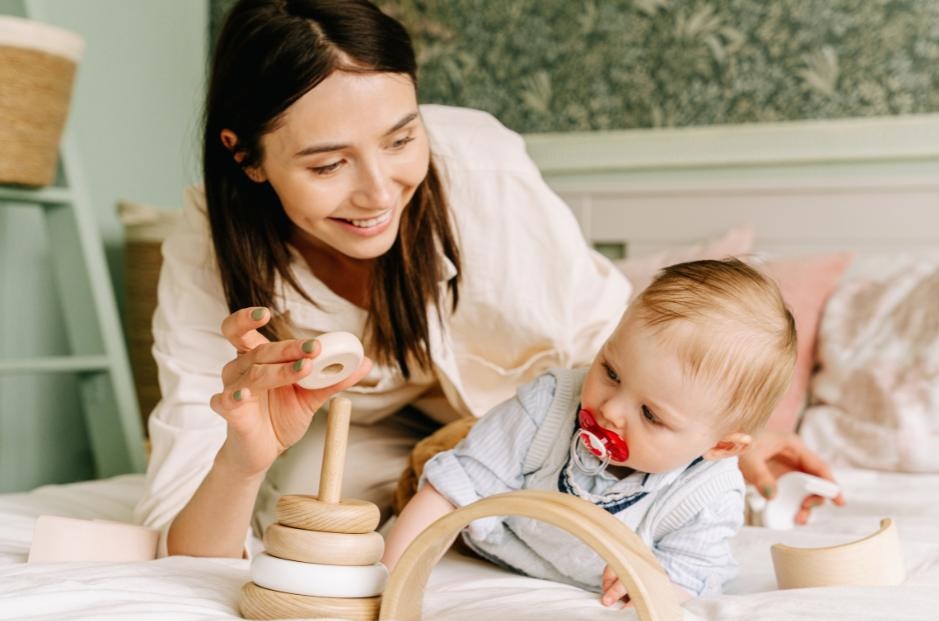“The essence of independence is to be able to do something for one’s self.” – Dr Maria Montessori
Independence is, in fact, the aim of childhood. As adults, our role should be one of guidance and support for our children working towards becoming independently functioning individuals. How as parents should we go about achieving this?
In this blog we will look at some activities from the manipulation curriculum, particularly focusing on food preparation that can easily be recreated at home.
How Can Practical Life Activities help your child?
The aim of the practical life activities is, on a very basic level, to help your child to build practical life skills that can aid him/her in being more independent. While the practical life activities are great to perform in isolation (you can have each activity set up on individual trays on low shelves at home), they are also very transferable into a child’s everyday life.
The pouring activity, for example, enables a child to become skilled at pouring their own drinks without asking for an adult’s help. The spooning activity enables a child to build skills and strength for feeding themselves or helping with baking-type activities. The whisking activity introduces a child to a whisk, (a rather strange looking object) and enables them to help with any baking/cooking-related whisking requirements.
Apart from “scaffolding” your child towards independence, what does exposing your child to these types of practical life activities do for them?
- Equips them with an arsenal of really useful and genuinely helpful life skills.
- Boosts confidence and self-esteem – the ability to be independent with anything has this effect for young and old but this is immensely important for small children. To feel they can achieve things without constant adult intervention and interference is fantastic for a child’s self-esteem.
- Instils in the child a willingness to try new activities as they feel they can succeed as opposed to feeling trepidation towards new activities, fuelled by a fear of failure.
- Refines fine and gross motor skills and hand-eye coordination. These seemingly simple activities take a lot of practice for some children to achieve as they work with muscle groups that are not yet strong or co-ordinated. These activities build strength and aid refinementin almost all of the small and large muscle groups, not only helping the child to perform the activities more easily but also laying the foundations of strength and co-ordination in the hand, arm and the core that are vital for later writing.
- If your child does move on to a Montessori environment from the home, having practiced these activities at home and having them available in the classroom creates a feeling of comfort through familiarity for a child who may be spending time away from home for the first time.
How can you support this independence at home?
Due to the nature of the types of activities practiced, Practical life is perfectly suited for being readily available in the home environment. No special equipment is required so most of the activities can be very easily re-created at home. The activities can be adapted for children of varying ages and skill levels.
When offering activities at home, consider the following:
- As with all new activities, demonstrate how to do them first.
- Let your child watch you (don’t give verbal instructions while demonstrating, just let your child concentrate on watching your actions).
- Make sure your actions are clear and that your child is in a good position to see all that you are doing – then let them try.
- Try not to intervene or correct unless asked – allow your child time to figure this out.
- You know your child better than anyone, be aware of exposing your child to activities that challenge him/her but are within his or her grasp. Setting activities that are far beyond your child’s current skill level or maturity does the opposite of boosting self-esteem.
Today’s food preparation activities are
1. Juice Squeezing –This activity is quite hard work for little hands as it requires upper body and arm strength, so it may take a few tries before being mastered and juice is produced. Provide your child with a cup for pouring the juice into and drinking from. Pouring is another Montessori practical life activity so this provides an opportunity for practicing this skill. Very young children can even just be shown how to squeeze pieces of orange with their hands into a cup and progress to a juicer as co-ordination and strength develops. This squeezing action is great for strengthening little hands.
2. Cheese or Carrot Grating – This can be done with any food soft enough for your child to grate. Younger children need softer foods such as cheese (room temperature cheese grates very easily for toddlers), 4/5-year-olds can try with carrots or harder foods. Be happy for your child to eat whatever they grate or to be able to contribute it to a salad or a family meal. Small graters as shown in the picture are great for little hands.

3. Chopping – Again this can be done with any food soft enough for your child to chop. Depending on the food this does not need to be done with sharp knives if you are not comfortable with this but sharper child-safe knives can be used under supervision for older children. This activity is suitable for any child with the ability to hold a knife and push it down into food. As the child matures, harder foods can be offered along with sharper cutting tools. Very young children can start with foods such as small blocks of butter as this is very soft but still allows them to practice the cutting motion.
4. Boiled Egg Peeling and Chopping – This is fantastic for refining your child’s lightness of touch (required for later writing) as a really gentle hand is needed to peel the egg without taking half of the egg off with the peel. This can be quite tricky and will need practice. Once peeled allow your child to chop the egg and consume! For very young children the peeling action can be practiced with something like a Satsuma with thicker skin (you must start the peeling and allow your child to practice pulling off with thumb and finger grasp).
5. Soapy Water Whisking – This is great for building arm and wrist strength and endurance as any baker without an electric mixer will know! If you do not want to waste food that you do not particularly want whisked do this with some dishwashing soap in a bowl of water. Allow your child to squeeze in the soap as this is also great for hand and finger strengthening. The water must be whisked quite hard to make bubbles appear. Demonstrate first to show your child what their efforts will achieve, otherwise they may give up before bubbles appear! This is a great group activity for younger and older children/siblings. Teamwork produces twice the bubbles in half the time!

?Have a look at our Amazon shop for some more useful practical life utensils and items:
All of these activities, while seemingly simple, are new experiences for your child. Bear in mind that, many of them will not be at all easy as he/she is still building the strength and coordination required to complete them with ease.
Mastering these activities and being able to perform them independently will do wonderful things for your child’s self-esteem and ability to be independent. These types of activities are always available in my environment and the children are always drawn to them. They are generally things children see adults doing so they love to try.
Other food preparation activities you might like to try can include:
- Spreading butter, cream cheese etc onto bread or crackers with a child-sized spreader;
- Grinding (spice, pepper, garlic grinder);
- Crushing herbs with pestle and mortar;
- Older children can be involved in stirring heated sauces or melting butter;
- Helping to measure or weigh ingredients and pouring or tipping into mixing bowls.
The activities can be done independently or made part of a morning’s activity where your child helps to prepare their own snack and juice drink or where they are able to contribute to family meal preparation. Food preparation activities can take any form that your imagination can muster. The form is not important, the goal of helping your child to acquire skills and achieve independence is. Patience is key as is the acceptance of some mess! Cleaning up afterwards is also part of Montessori care of the environment curriculum – something to look at next time.
Be sure to join us on our Facebook group Montessori at home (0-3yrs).

We are so grateful to Angie for the insightful blog as part of our practical life series. To see what else Angie is up to, check out her website www.montessoriathome.info




